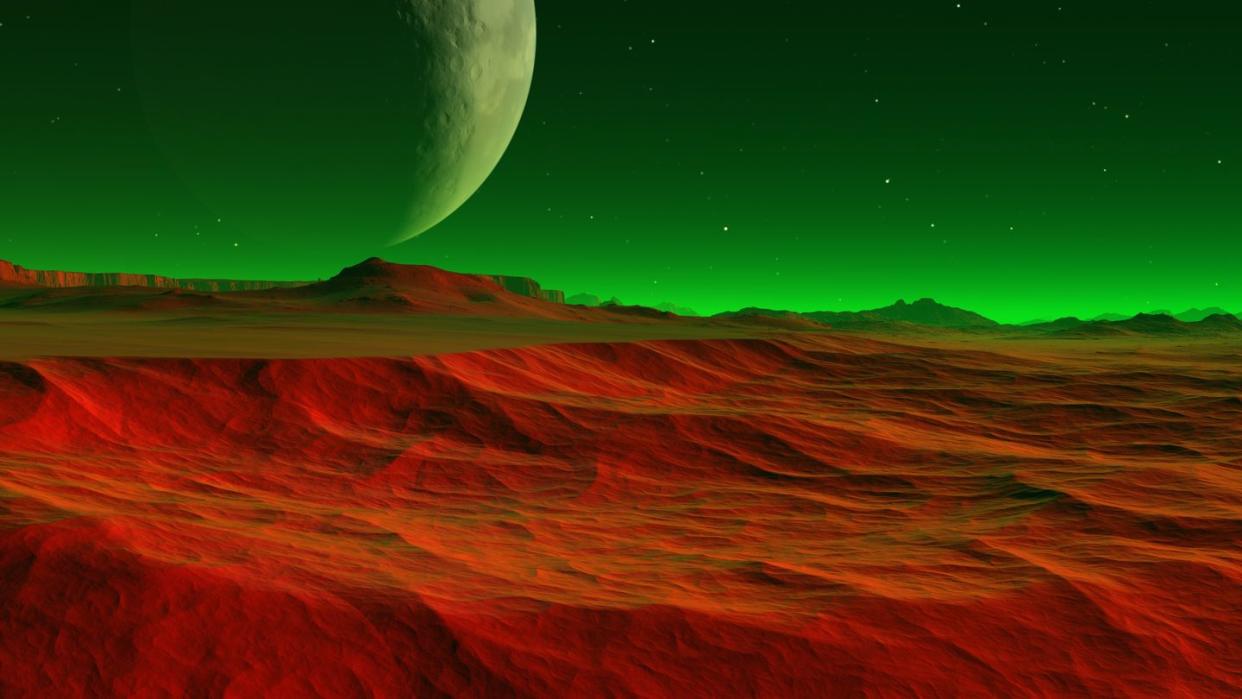A New Study Says Maybe Aliens Already Terraformed Other Planets

"Hearst Magazines and Yahoo may earn commission or revenue on some items through these links."
Humans are considering the feasibility of terraforming our nearby planetary neighbor, so what if a distant alien civilization already had that idea and acted on it?
A new paper suggests that looking for clusters of similar planets could aid in the search for extraterrestrial life as the concepts of panspermia and terraformation would likely lead to many worlds revealing similar biosignatures.
While this potentially widens the target when hunting for alien life, it's still limited by our ability to study exoplanet atmospheres as well as understanding of how life can form in the first place.
Colonizing Mars would be a gargantuan task made infinitely easier if humans had the ability to terraform the planet. Turning the fourth rock from the Sun into a convincing facsimile of our own Earth is a tempting idea, and one that’s been considered seriously: billionaires talk about it, NASA’s exploring the notion, and it’s the far-future backdrop of many great sci-fi stories.
Heck, it’s even a board game.
But while the dreams of human terraformation remain only fiction and speculation, a new paper published on the pre-print server arXiv wonders if advanced alien civilizations already came up with this bright idea, and most importantly, have put it into practice.
“A fundamental goal of astrobiology is to detect life outside of Earth. This proves to be an exceptional challenge outside of our solar system, where strong assumptions must be made about how life would manifest and interact with its planet,” the paper reads. “Here we explore a model of life spreading between planetary systems via panspermia and terraformation. Our model shows that as life propagates across the galaxy, correlations emerge between planetary characteristics and location, and can function as a population-scale agnostic biosignature.”
One of the major headaches of trying to find life beyond Earth is that scientists are working with a sample size of one. Because of our cosmic ignorance, many assumptions have to be made about how various life forms would interact with their planets and host star systems.
As the authors note, the paper investigates two modes of planet colonization — panspermia and terraformation. Panspermia is a theory that the building blocks of life exist throughout the galaxy and only need to find a fertile environment to grow (i.e. microbe-carrying asteroids traveling crashing on Earth billions of years ago). The other, terraformation, is a more purposeful means of altering a planet's chemical make-up to better suit a nearby civilization looking for a bit more galactic leg room.
The study simulated a universe that contained 1,000 planets, each orbiting a star. Then, one of the planets began spreading life throughout the system. Once inhabitants of this planet reached another planet, it terraformed the world in order to suit its needs — very similar to what humans are already considering. The team then analyzed the patterns that emerged forward in time as this type of panspermia propagated across the galaxy. This helped the researchers to develop signals that a group of planets might contain life as well as create methods for tracing back to the original life-spewing planet.
"By clustering planets based on their observed characteristics, and examining the spatial extent of these clusters, we demonstrate…a way to prioritize specific planets for further observation—based on their potential for containing life," the paper reads.
While this gives astrobiologists a bigger target when searching for extraterrestrial life, it still runs into many of the limitations that plague typical searches for alien biosignatures — molecules that are only produced by biological processes — which is the need for a telescope that can detect such particles in exoplanet atmospheres as well as our overall limited understanding of how life forms in the first place.
But if one day we detect a suspicious similarity among a collection of planets, it may be evidence of extraterrestrial life at work.
You Might Also Like

